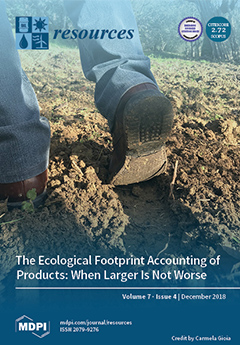This research aims to analyze the relationships between causal factors likely to affect future CO
2 emissions from the Thai transportation sector by developing the Structural Equation Modeling-Vector Autoregressive Error Correction Mechanism Model (SEM-VECM Model). This model was created to fill information gaps of older models. In addition, the model provides the unique feature of viable model application for different sectors in various contexts. The model revealed all exogenous variables that have direct and indirect influences over changes in CO
2 emissions. The variables show a direct effect at a confidence interval of 99%, including per capita GDP (
), labor growth (
), urbanization rate factor (
), industrial structure (
), energy consumption (
), foreign direct investment (
), oil price (
), and net exports (
). In addition, it was found that every variable in the SEM-VECM model has an indirect effect on changes in CO
2 emissions at a confidence interval of 99%. The SEM-VECM model has the ability to adjust to the equilibrium equivalent to 39%. However, it also helps to identify the degree of direct effect that each causal factor has on the others. Specifically, labor growth (
) had a direct effect on per capita GDP (
) and energy consumption (
) at a confidence interval of 99%, while urbanization rate (
) had a direct effect on per capita GDP (
), labor growth (
), and net exports (
) at a confidence interval of 99%. Furthermore, industrial structure (
) had a direct effect on per capita GDP (
) at a confidence interval of 99%, whereas energy consumption (
) had a direct effect on per capita GDP (
) at a confidence interval of 99%. Foreign direct investment (
) had a direct effect on per capita GDP (
) at a confidence interval of 99%, while oil price (
) had a direct effect on industrial structure (
), energy consumption (
), and net exports (
) at a confidence interval of 99%. Lastly, net exports (
) had a direct effect on per capita GDP (
) at a confidence interval of 99%. The model eliminates the problem of heteroskedasticity, multicollinearity, and autocorrelation. In addition, it was found that the model is white noise. When the SEM-VECM Model was used for 30-year forecasting (2018–2047), it projected that CO
2 emissions would increase steadily by 67.04% (2047/2018) or 123.90 Mt CO
2 Eq. by 2047. The performance of the SEM-VECM Model was assessed and produced a mean absolute percentage error (MAPE) of 1.21% and root mean square error (RMSE) of 1.02%. When comparing the performance value with the values of other, older models, the SEM-VECM Model was found to be more effective and useful for future research and policy planning for Thailand’s sustainability goals.
Full article





